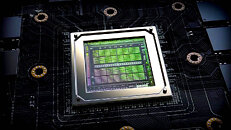- Joined
- May 21, 2024
- Messages
- 1,478 (3.62/day)
NVIDIA is reportedly considering a significant design change for its GPU products, shifting from the current on-board solution to an independent GPU socket design following the GB200 shipment in Q4, according to reports from MoneyDJ and the Economic Daily News quoted by TrendForce. This move is not new in the industry, AMD has already introduced socket design in 2023 with their MI300A series via Supermicro dedicated servers. The B300 series, expected to become NVIDIA's mainstream product in the second half of 2025, is rumored to be the main beneficiary of this design change that could improve yield rates, though it may come with some performance trade-offs.
According to the Economic Daily News, the socket design will simplify after-sales service and server board maintenance, allowing users to replace or upgrade the GPUs quickly. The report also pointed out that based on the slot design, boards will contain up to four NVIDIA GPUs and a CPU, with each GPU having its dedicated slot. This will bring benefits for Taiwanese manufacturers like Foxconn and LOTES, who will supply different components and connectors. The move seems logical since with the current on-board design, once a GPU becomes faulty, the entire motherboard needs to be replaced, leading to significant downtime and high operational and maintenance costs.

View at TechPowerUp Main Site | Source
According to the Economic Daily News, the socket design will simplify after-sales service and server board maintenance, allowing users to replace or upgrade the GPUs quickly. The report also pointed out that based on the slot design, boards will contain up to four NVIDIA GPUs and a CPU, with each GPU having its dedicated slot. This will bring benefits for Taiwanese manufacturers like Foxconn and LOTES, who will supply different components and connectors. The move seems logical since with the current on-board design, once a GPU becomes faulty, the entire motherboard needs to be replaced, leading to significant downtime and high operational and maintenance costs.

View at TechPowerUp Main Site | Source







